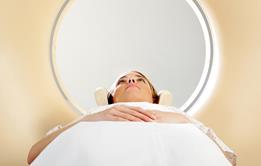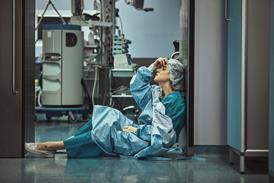Some relatively minor investment could go a long way to improving NHS equipment but time is running out for a package to rescue the ageing asset base, says NHS Supply Chain.
Recent research highlights an increasing problem in the NHS of maintaining a fit for purpose estate of medical equipment. As any equipment gets older it becomes more costly to maintain, less clinically effective, less efficient and productive than newer technology, and costs more to run.
- To replace or not to replace equipment? Managers give their views
- How to get the best deal when purchasing equipment
The risk of failure or breakdown increases, as does the risk to patient safety. Furthermore, in an increasingly digital world where information will be at the heart of an improved health service, aged equipment is either “analogue” or not connected digitally to the information infrastructure - thus becoming a drag on the efficiency of the NHS.
‘The situation is already very acute and predicted to get worse in 2014-15’
There is also the challenge of introducing new technologies into the healthcare system which can contribute to better patient diagnosis and care.
All these issues lead to a major challenge for the health service in terms of replacement costs, maintenance costs, financing costs and productivity but also one of “healthcare utility” - how to get the maximum utility from the investment in medical equipment technology.
The NHS has an installed medical equipment asset base of approximately £5bn at replacement value and an annual cost of provision and management in excess of £1bn.
Aged asset base
This covers major medical equipment such as MRI and CT scanners down to basic monitors costing a few thousand pounds. This equipment is vital to the delivery of modern healthcare and is also key to unlocking productivity benefits on an NHS cost base of over £120bn a year.
A relatively minor investment in new technology could have a very positive effect on total NHS costs and patient pathways. Yet much of the medical equipment asset base is ageing due to under investment and a lack of a holistic asset management strategy at all levels.
The situation is already very acute and predicted to get worse in 2014-2015 in critical areas of cancer diagnosis and care involving MRI, CT and linear accelerator machines.
Indeed, the aged asset base for these types of equipment is worse now than it was when the National Audit Office report and public accounts committee hearing on this subject took place in 2011
The following articles explore how the challenges of managing the medical equipment estate manifest themselves at two major NHS trusts. They articulate the day to day issues being faced by procurement, clinical and finance departments in meeting them.
Medical equipment: A cure for old age

How minor investment could transform the ageing asset base of the NHS
 Currently
reading
Currently
reading
Medical equipment: A cure for old age
- 2
- 3





























No comments yet